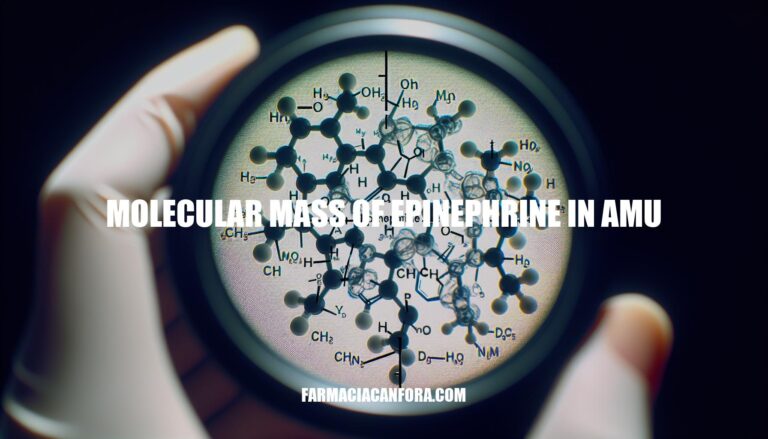


Epinephrine, also known as adrenaline, is a crucial hormone and neurotransmitter in the body. Its molecular mass is approximately 183.2 atomic mass units (amu).
In chemistry, understanding the molecular mass of epinephrine helps in calculating the stoichiometry of reactions involving this molecule. In pharmacology, this knowledge is essential for dosing and formulating medications, ensuring that the correct amount of the active ingredient is administered for therapeutic effects.
The chemical formula of epinephrine is C₉H₁₃NO₃.
To calculate the molecular mass of epinephrine in atomic mass units (amu), follow these steps:
Identify the atomic masses of each element:
Multiply the atomic mass of each element by the number of atoms in the formula:
Sum the total masses:
Thus, the molecular mass of epinephrine is approximately 183.23 amu.
Here’s the step-by-step process for calculating the molecular mass of epinephrine (C(9)H({13})NO(_3)) in atomic mass units (amu):
Identify the molecular formula: Epinephrine is C(9)H({13})NO(_3).
Find the atomic masses:
Multiply the atomic mass of each element by the number of atoms of that element in the molecule:
Add the results from step 3 to get the total molecular mass:
So, the molecular mass of epinephrine is 183.23 amu.
Knowing the molecular mass of epinephrine (183.2 amu) is crucial in pharmacology for several reasons:
Dosage Calculations: Accurate dosage is essential to ensure therapeutic efficacy and avoid toxicity. The molecular mass allows for precise conversion between mass (mg) and moles, ensuring the correct amount of active ingredient is administered.
Drug Formulation: Understanding the molecular mass helps in designing formulations with the right concentration of epinephrine. This ensures stability, solubility, and bioavailability of the drug.
Pharmacokinetics: It aids in predicting how the drug is absorbed, distributed, metabolized, and excreted in the body. This information is vital for determining the appropriate dosing regimen.
These aspects collectively ensure that epinephrine is both safe and effective for medical use.
The molecular mass of epinephrine is approximately 183.2 atomic mass units (amu), calculated by multiplying the atomic masses of each element in its chemical formula C₉H₁₃NO₃ by their respective numbers and summing the results.
This knowledge is crucial in pharmacology for accurate dosage calculations, drug formulation, and understanding pharmacokinetics, ensuring epinephrine’s safety and efficacy in medical use.